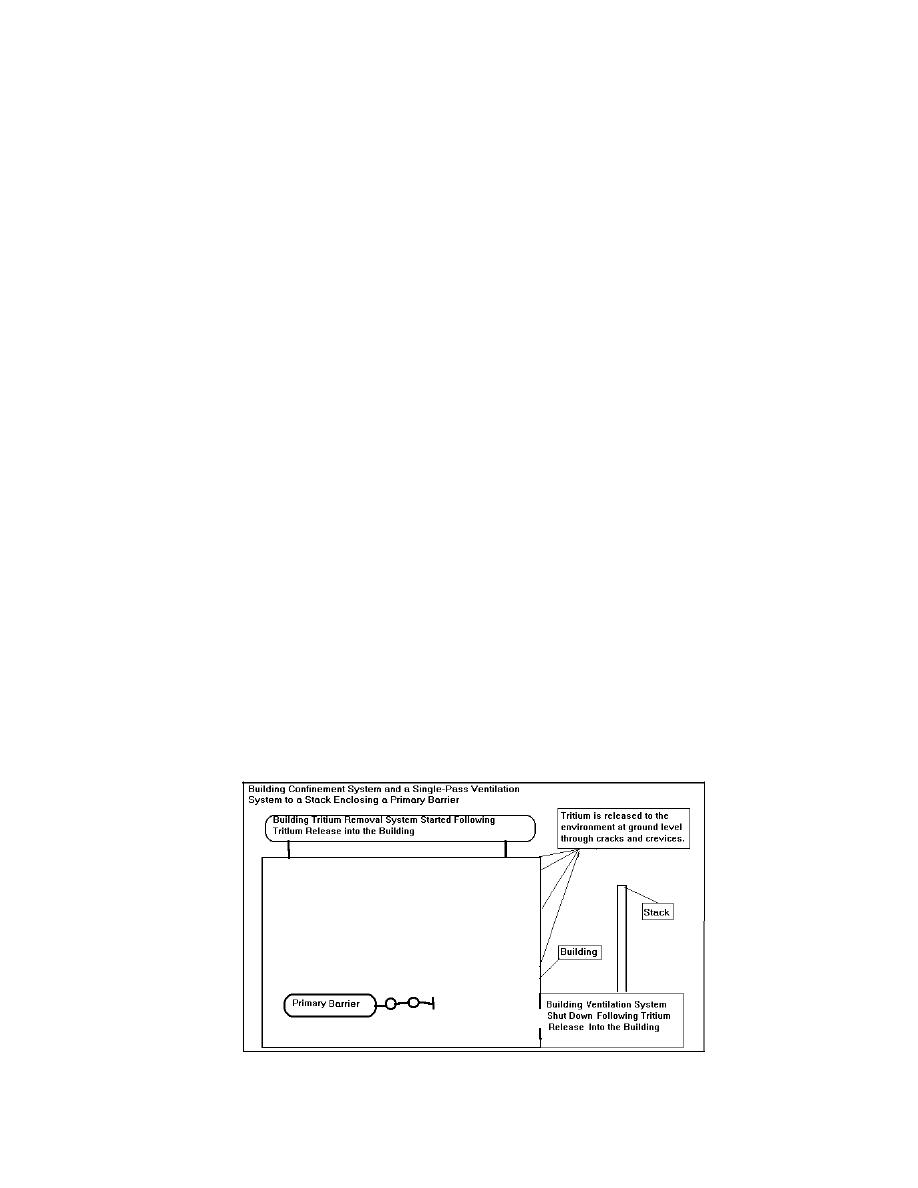 |
|||
|
|
|||
|
Page Title:
Low-Quality Secondary Containers |
|
||
| ||||||||||
|
|  DOE-HDBK-1129-99
Assuming a glovebox with a volume of 1 m3 and a release of 10 grams of tritium, the glovebox
concentration following the release will be 0.1 Ci/cm3. Even at the relatively high leak rates of 10-3
to 10-4 cm3 He/s, approximately 0.1 Ci of tritium will be released for every 1,000 to 10,000 seconds
of elapsed time. This is a release of approximately 1 Ci from the facility stack for every 3 to 30
storage hours, which generally does not pose a significant health risk.
Following a release into a glovebox, the tritium is recovered in a tritium removal system. This low-
level waste is in the form of water contaminated with tritium. Several hours can elapse during the
recovery process without a significant release of tritium to the environment.
4.1.1.a(2)(c) Low-Quality Secondary Containers
Other facilities are equipped with lower quality systems such as rooms or buildings. It is difficult to
determine the leak rate of these low-quality systems and, therefore, it is difficult to estimate the
quantity of tritium that will be released to the environment during a primary container leak.
If the secondary container is a room or building, the ventilation system is shut off to prevent
release of the tritium through the building stack following the release. The tritium then finds its way
to the environment at ground level through the building walls, ceiling, doors, and windows. The
tritium released contaminates the building and the area adjacent to the building. If a tritium
cleanup system is employed, (in a room or a building), the ventilation system is switched over to
the recirculation mode to prevent release of tritium through the building stack. Even in this mode,
tritium is released to the environment as described above, but in a lesser quantity.
For example, assuming a 100 m3 (20 x 18 x 10 feet) building and a 1-gram release to the building,
the tritium concentration in the building gases will be 0.0001 Ci/cm3. If the building is the
containment barrier, it will leak approximately 5 percent of its volume to the environment per hour;
therefore, an environmental tritium release of 500 Ci/hr will result.
A significant fraction of the tritium released from the primary containment system will be released
to the environment before recovery is accomplished due to the high leak rate of these low quality
secondary systems. However, these low-quality systems still have a place in the tritium
containment strategy. These room- or building-type systems, equipped with high flow rate tritium
removal systems, are used in facilities where there are no other feasible alternatives due to the
large size of the equipment being enclosed.
FIGURE 4-4. Building confinement system
33
|
|
Privacy Statement - Press Release - Copyright Information. - Contact Us |